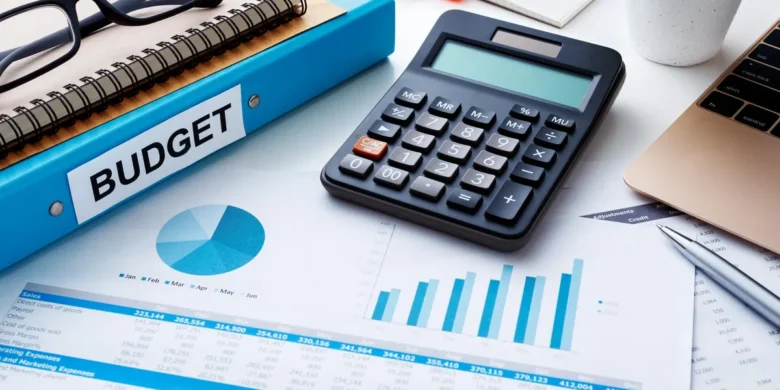Crafting a budget can be a complex endeavor for small businesses. It involves forecasting costs and revenue based on past experience as well as future projections. Begin by calculating your total income. This should include sales as well as any incoming cash, such as savings account interest. Next, examine seasonal trends to identify peak periods.
1. Set Goals
To create a budget, it is necessary to set goals for both revenue and expenses. These should be within your current financial capacity while meeting business objectives. Begin by reviewing historic data from your profit and loss statement to understand past income and expense trends and anticipate what to expect going forward.
Sort your spending into fixed and variable costs after that. Fixed expenses like rent and salaries remain constant regardless of revenue levels, while variable expenses like supplies and utilities tend to vary with demand. Be sure to create an emergency fund as an extra precaution against unexpected expenses or revenue shortfalls.
2. Know Your Fixed and Variable Costs
Step one of creating a business budget involves identifying both fixed and variable expenses. Fixed expenses may include rent, utility bills, software subscriptions, debt payments, and insurance premiums; variable costs vary month-by-month based on activity levels or costs, such as the cost of goods sold, billable labor, or credit card processing fees.
Many expenses don’t fit neatly into either fixed or variable categories; rather, they fall somewhere in-between. Understanding these hybrid costs enables more accurate allocation projections as well as showing how expenses change during growth or decline, allowing you to develop more resilient cash flow strategies.
3. Create a Spending Plan
Budgets provide an outline of your business’s income and expenses. A budget estimates spending, predicts cash flow and profits, and helps make smart decisions about investment strategies and expenditure.
Step one in developing a budget involves compiling historical fixed costs and using them as a basis for projecting future expenses. The next step should be estimating revenue; focus on areas that offer maximum return-on-investment potential when prioritizing expenditures. Remember, too, that your business has variable costs that vary month to month, such as fuel, office supplies, marketing expenses, and training and development expenses.
4. Track Your Spending
No matter the nature of your business, tracking spending can help avoid cash flow crises, make more informed decisions about expenses and profits, and identify areas for cost reductions.
Monitor your spending either manually with a notebook or electronically through software such as spreadsheets or accounting systems, but make a commitment to stick with whatever method you select. Keeping tabs on spending will allow you to see where things are working well or need improvement, as well as help set short-term goals like paying off debt or saving up for larger marketing budgets.
5. Set a Budget Goal
A business budget is a forward-looking financial plan that projects future income and expenses. This may involve both short-term (monthly/quarterly/annual) as well as long-term plans with periodic reviews.
Setting realistic and long-term goals based on past numbers and trends is of utmost importance to make progress more manageable and sustainable in the long run. Aim to implement a SMART (specific, measurable, attainable, realistic, and timely) strategy when setting these objectives. Businesses may utilize different budget formats, including spreadsheets or accounting software, when setting their budget. Small-business accounting systems will often offer budget reports to make the process simple and effective.
6. Create a Cash Flow Plan
Cash flow plans are financial projections that outline your income and expenses in detail, helping to identify areas in which there may be discrepancies between income and expenditure—such as slow customer payments or unnecessary spending on non-essential items.
Smartsheet provides many useful spreadsheet templates and projection tools that make creating a budget easy, as well as an indispensable startup costs template that can assist new entrepreneurs.
7. Set a Savings Goal
As a business owner, setting savings goals is essential to meeting long-term business goals more quickly. Setting this type of target can help track progress while making wise investment choices to speed the path toward reaching these objectives faster.
When creating a budget, it is crucial that all costs be considered, both fixed and variable costs, as well as one-time expenses. Fixed costs remain constant regardless of revenue generated, such as rent, software subscriptions, insurance premiums, and base salaries, while variable costs change with your income, such as raw materials and shipping expenses. An effective budget should also include a net income goal so that you know exactly how much profit your business is making after paying all expenses.
8. Create a Repayment Plan
Repayment plans provide an effective means of setting and meeting debt goals without negatively affecting cash flow or future opportunities. By setting clear and manageable goals, your repayment plan can help you gradually reduce debt without negatively affecting cash flow or growth opportunities.
An effective business budget serves as an essential financial management tool, providing estimates of income and expenses over a given period. A well-crafted budget can boost business performance by cutting costs while simultaneously increasing profits. Budgets come in all forms and serve various functions. One such budget type is an operating budget, which tracks daily expenses such as rent, utilities, and payroll; others specialize in tracking investment plans or large expenditures.
9. Manage Your Cash Flow
Maintaining a strong cash flow is integral to business success, from receiving payments quickly from customers and paying bills or debts promptly to assessing invoices, tax payments, and expenses that will become due over the coming three- to six-month period.
To achieve this goal, the ideal approach is to establish a budget based on historical data. Benchmarks from similar businesses within your industry or lifecycle stage can help determine how much should be spent on things such as rent, payroll, and inventory costs.




